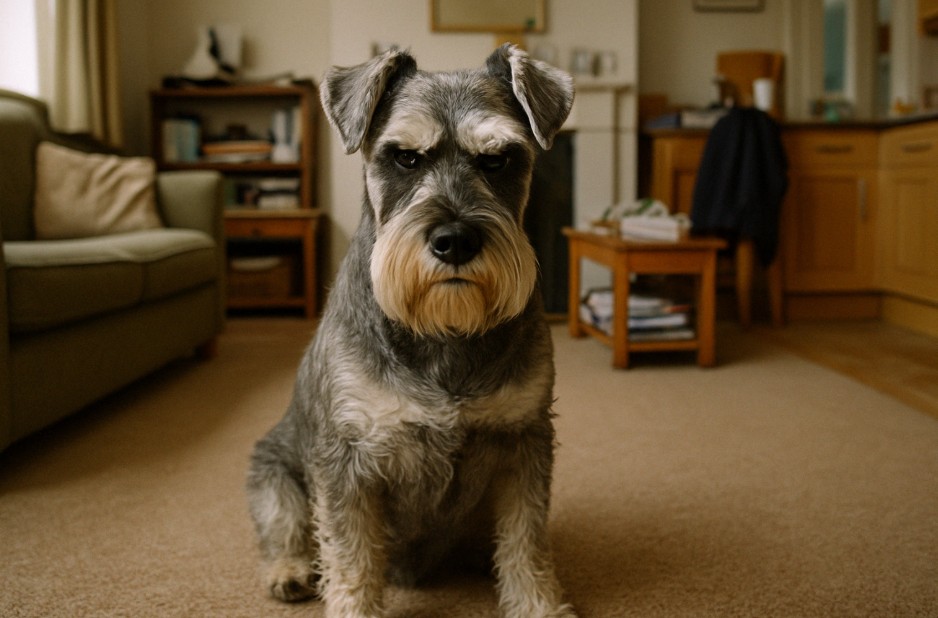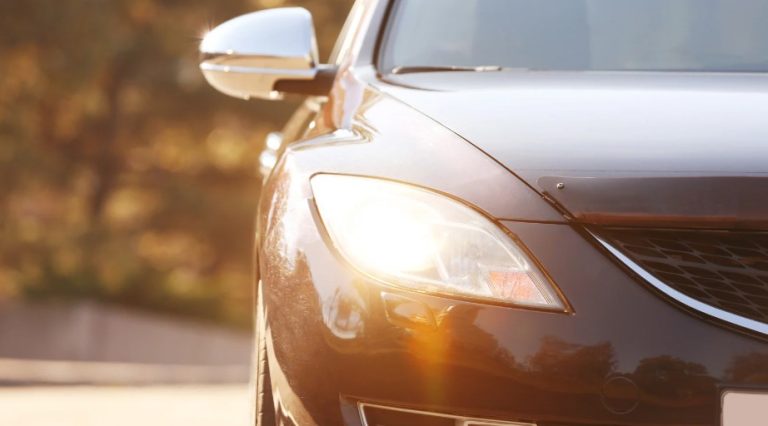Why Schnauzers Are the Worst Dogs?
According to recent Kennel Club data, Schnauzers are among the top 20 most registered breeds in the UK, celebrated for their striking appearance and lively personalities.
However, behind the wiry beards and energetic charm lies a reality many owners don’t anticipate. Why do schnauzers often frustrate even seasoned pet owners, and what earns them the reputation of being one of the most challenging breeds?
As someone who has shared a home with many dog breeds over the years, each with their unique quirks, it’s clear that schnauzers simply aren’t the right fit for everyone.
In this guide, we’ll explore their distinct traits, energetic demands, grooming needs, and behavioural challenges to understand why schnauzers are sometimes labelled the worst dogs.
Why Is the Schnauzer Temperament Difficult to Handle?
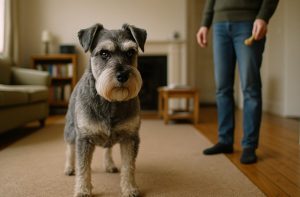
Schnauzers are known for their bold and intelligent personalities. Bred as alert guard dogs and skilled rat catchers, they retain a strong instinct to protect and assert themselves, which often translates into wilfulness and dominance.
Temperamental Traits That Present Challenges:
- Strong-willed and assertive
- Intense mental and physical energy
- Highly observant and easily triggered
- Distrustful of strangers
Their intelligence, while admirable, can become problematic. Unlike some trainable breeds that seek to please, schnauzers often question authority, making them a tough match for new or timid owners.
Why Do Schnauzers Bark So Much?
Barking is one of the schnauzer’s most defining and problematic traits. These dogs are incredibly alert, and their keen senses make them quick to sound the alarm at any perceived disturbance.
Whether it’s a doorbell, footsteps in the hallway, a bird outside the window, or a rustling tree, schnauzers will likely bark in response.
This behaviour can become a daily disruption, especially in urban areas or flats with thin walls. While other breeds may settle after a short period of alerting, schnauzers often continue barking out of habit or sheer enthusiasm.
What begins as a form of protection can escalate into compulsive barking if not addressed early.
Training can reduce excessive vocalisation, but it often requires significant effort. Many schnauzers bark not just out of vigilance but also out of boredom, anxiety, or a lack of stimulation, meaning owners need to address both behaviour and lifestyle to bring barking under control.
Why Are Schnauzers Prone to Aggression and Reactivity?

It’s a common misconception that schnauzers are naturally aggressive. In reality, the breed is highly reactive, and this can sometimes be mistaken for aggression.
Reactivity refers to how a dog responds to external stimuli, such as other animals, unfamiliar people, loud noises, or sudden movements.
Schnauzers tend to be particularly sensitive to their environment. Without early socialisation, they can become suspicious of strangers and wary of unfamiliar dogs.
Some owners also report their schnauzers displaying resource guarding, a behaviour where the dog becomes possessive over food, toys, or even people.
These behaviours make schnauzers a less-than-ideal choice for homes with young children or other reactive pets.
While proper socialisation and training can help manage these tendencies, it requires time, dedication, and often the assistance of a professional trainer.
Why Are Schnauzers Considered High-Maintenance Dogs?
The schnauzer’s signature look, complete with feathery eyebrows, bearded muzzle, and thick, wiry coat, is undeniably attractive. But keeping that look requires consistent and often expensive grooming.
Grooming Demands

Schnauzers possess a double coat consisting of a soft undercoat and a harsh, wiry topcoat. Without regular care, this coat can become tangled, matted, and unpleasant to touch.
Facial hair needs particular attention, as it collects food, saliva, and dirt throughout the day. Tear stains are another concern, especially in lighter-coloured schnauzers.
Basic grooming includes:
- Brushing at least 2–3 times a week
- Professional grooming every 6 to 8 weeks
- Daily cleaning around the mouth and eyes
- Occasional hand-stripping for show dogs
Some owners opt for a simplified “puppy cut” style to reduce the grooming load, but even this trimmed-down version still requires regular brushing and maintenance.
For those who are not comfortable grooming their dog themselves, frequent trips to a professional groomer become essential. Over time, these appointments can significantly increase the cost of ownership.
Why Are Schnauzers So Hard to Train?
Schnauzers are intelligent and capable, but that doesn’t necessarily make them easy to train. In fact, their sharp minds and independent spirit often work against the training process.
They quickly recognise patterns and cues, which can be helpful in obedience exercises. However, they also learn what they can get away with just as quickly.
This means that inconsistency on the part of the owner can result in a dog that ignores commands or finds ways to work around them.
Stubbornness is a hallmark of the breed. While schnauzers respond well to positive reinforcement, they are not driven solely by a desire to please unlike breeds such as retrievers. Instead, they require training that engages their mind and offers meaningful rewards.
According to Stanley Coren’s widely cited rankings in The Intelligence of Dogs, schnauzers rank impressively high in working and obedience intelligence.
This means they are capable learners, but they must be taught by someone who is confident, consistent, and patient.
Why Do Schnauzers Struggle With Separation Anxiety?
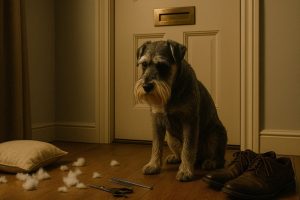
Loyal to a fault, schnauzers form deep bonds with their humans, and this attachment can result in significant distress when they are left alone.
Common Signs of Separation Anxiety:
- Destructive behaviour (chewing, digging)
- Excessive barking or howling
- Soiling indoors despite training
- Pacing or panic when owners prepare to leave
Creating a structured daily routine, using enrichment toys, and gradually increasing alone time can help, but schnauzers may never feel fully comfortable being left solo for long periods.
Why Might Schnauzers Not Fit Well in Families?
Although many schnauzers are loyal companions, their bold temperament and sensitivity can clash with busy family life. Rough play from children, unpredictable noise, and other pets can overwhelm them.
Challenges in Family Settings:
- May react poorly to rough handling
- Possess a strong prey drive problematic for small pets
- Require structured interactions with children
- May prefer calm, predictable households
With the right training and supervision, schnauzers can adapt. But they’re rarely the ideal “starter dog” for young families.
Why Should Some People Avoid Getting a Schnauzer?
Schnauzers demand a great deal from their owners. They are not content with being background pets or passive companions.
They need exercise, mental engagement, consistent training, and regular grooming. Without these things, their behaviour often spirals into frustration, anxiety, or even aggression.
Prospective owners should carefully evaluate their lifestyle, schedule, and experience before bringing a schnauzer home.
If you prefer a quiet, undemanding dog or lead a busy lifestyle with limited time for hands-on care, a schnauzer may not be the right fit.
Why Do People Think Schnauzers Are the Worst Dogs?
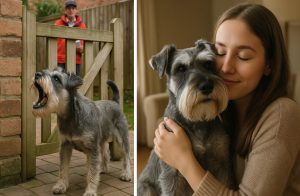
Much of the schnauzer’s negative reputation stems from unmet expectations. Many owners are drawn in by the breed’s cute appearance and small size without realising the significant work involved in caring for them.
They are not inherently bad dogs far from it. But their needs are intense, and their personalities can be too much for the average owner.
When these needs aren’t met, problematic behaviours emerge, reinforcing the stereotype that schnauzers are “the worst.”
In reality, they are simply one of the most misunderstood breeds. With the right environment and experienced handling, schnauzers can be extraordinary companions. But they’re not for everyone, and recognising that before adoption can save both owner and dog a great deal of heartache.
FAQs About Schnauzer Behaviour and Ownership
Are schnauzers naturally aggressive?
No, but they are highly reactive. Without proper training and socialisation, their reactivity can present as aggression, particularly towards unfamiliar people or animals.
Do schnauzers bark more than other dogs?
Yes, schnauzers are notably vocal. Their guarding instincts and high alertness make them quick to bark at almost anything out of the ordinary.
How much grooming does a schnauzer need?
Schnauzers require regular brushing, professional grooming every 6–8 weeks, and daily cleaning of their facial hair to prevent matting and odour.
Are schnauzers difficult to train?
They can be. While intelligent, they are also independent and may resist commands without consistent, positive reinforcement training.
Can schnauzers live with children and other pets?
With early training and socialisation, yes. However, their strong prey drive and dislike for rough handling mean they’re better suited to homes with older children.
What type of exercise does a schnauzer need?
Schnauzers thrive on daily walks, mental stimulation through games or training, and structured activities such as agility or scent work.
Are schnauzers suitable for first-time dog owners?
Typically not. Their demanding temperament and care requirements make them better suited to experienced owners who understand dog behaviour and training.

